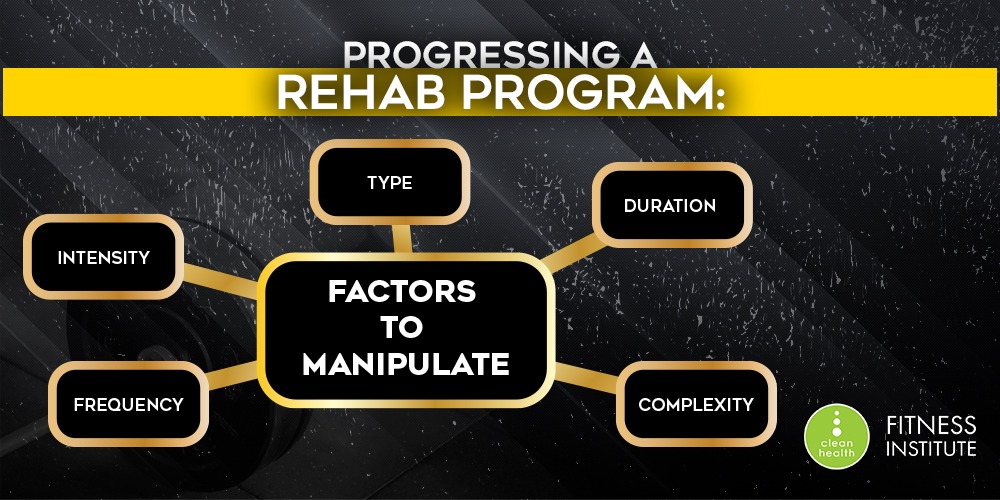
By Jade Mckee
If you are working with an athlete who has been injured, they will require rehabilitation to return to their chosen sport again at full capacity. You should encourage your client to seek treatment from a suitable qualified health professional immediately – who will be able to guide and work with you throughout the rehabilitation process.
The health professional’s recommendations will need to be followed precisely to ensure the correct movements will be targeting the correct muscles, using the correct load, throughout the rehabilitation process. Negating on this can result in further injury down the track – whether it be to the currently affected area, another part of the body, or it may mean the athlete is unable to perform at 100%.
The aim is to begin rehabilitation as soon as possible. To promote optimal function, the client’s swelling, inflammation and pain will all need to be controlled. Your client should be encouraged to follow any prescribed protocols for anti-inflammatory medications, ice, electrotherapy treatments, and the avoidance of any activities that aggravate their pain. The plan for the rehabilitation period should be discussed in detail with the client, and short and long term goals set. For example, a short term goal might include performing light weight resistance exercises, while a long term goal might be their return to sport.
It will be important to set realistic timeframes for these goals, while emphasising the timeframes will be approximates only – not set in stone. To assist with program compliance, the rationale for the program should also be discussed. The mechanism of injury should guide the program. For example if joint stability was thought to have contributed to the injury, then muscle control and strengthening will be addressed in the program.
The overall rehabilitation program will include components such as:
- Muscle conditioning – activation and motor re-education, strength, power & endurance
- Flexibility
- Neuromuscular control – proprioception & balance
- Functional exercise
- Sports specific skills
- Abnormal biomechanics will need to be corrected
- Cardiovascular fitness will need to be maintained
- Psychological factors will also be addressed
The stage of healing of the client’s injury will need to be accounted for at all times, with the correct load being used. Isometric training will be the first stage of training, and should not exceed the client’s pain thresholds. This will be progressed until dynamic training can begin. As with the isometric training – this will begin using the athlete’s bodyweight, or limb as resistance, before an external load is added.

The rehabilitation program will be progressed by manipulating a number of different factors, including the type of the activity that the athlete is undertaking, and the duration of the activity. The frequency and intensity of the activity will also be progressed, as will the complexity of the activity. The athlete will be closely monitored throughout the program, both in terms of their progression, and for any adverse effects. Overuse in the healing area can delay the healing process, therefore delaying the athlete’s full return to activity.
To safely be able to return to sport, your athlete will need to be able to demonstrate a full, pain-free range of motion, with equal strength bilaterally. They will need to be able to meet their sports specific demands, while demonstrating good muscular strength, flexibility and control.
Want to know more about injury prevention strategies for your training plans, so you can ensure clients are maximizing results while remaining free from pain & injury? Register for the Strength System International Certification Bundle (includes the Level 1&2 online courses!)
CLICK HERE TO SIGN UP & SAVE NOW
References
Brukner, P. and Kahn, K. (2007) Clinical Sports Medicine. McGraw-Hill Australia Pty Ltd.
Joyce, D. and Lewindon D. (Eds.) (2016) Sports Injury Prevention and Rehabilitation: Integrating Medicine and Science for Performance Solutions. Routledge.
Peterson, L. and Renström, P. (2017) Sports Injuries: Prevention, Treatment and Rehabilitation (4th ed.) CRC Press.






